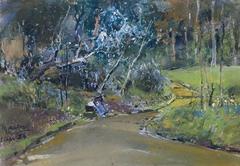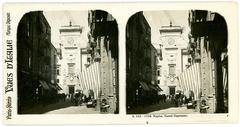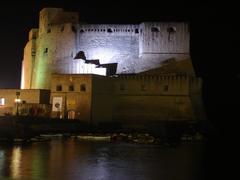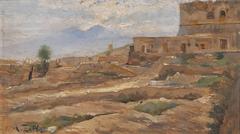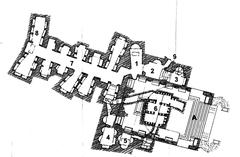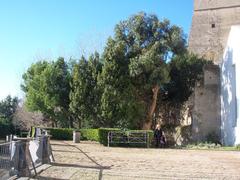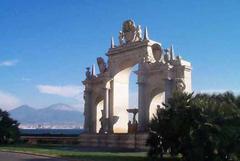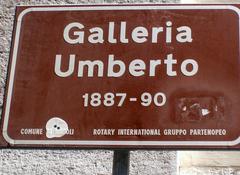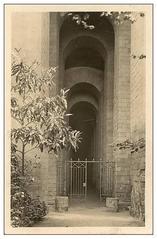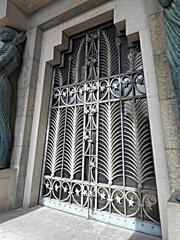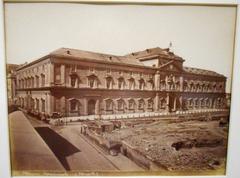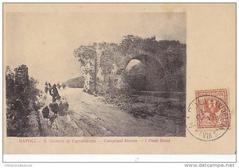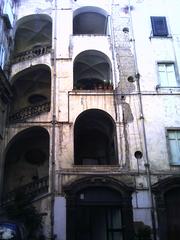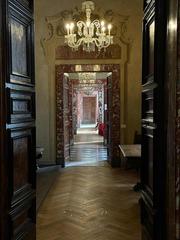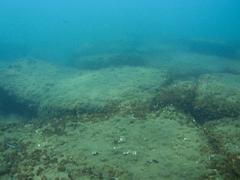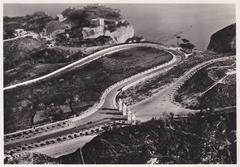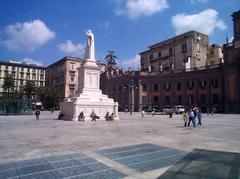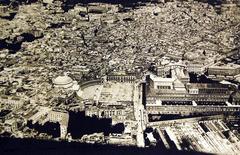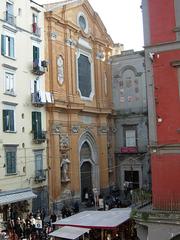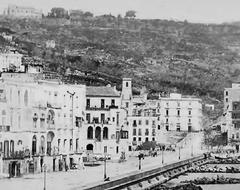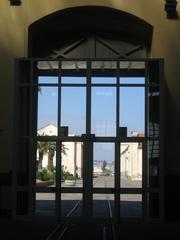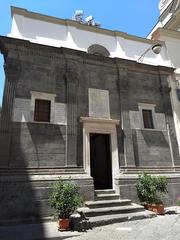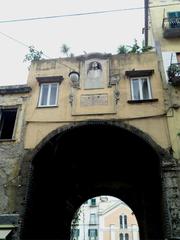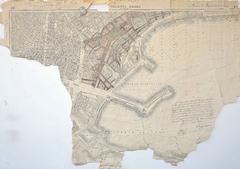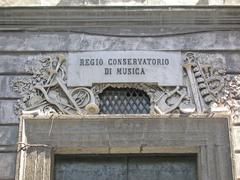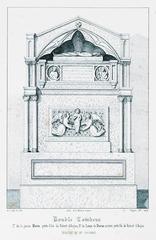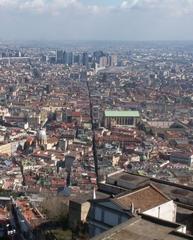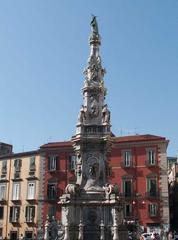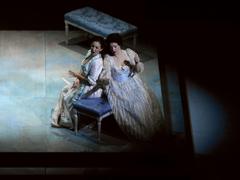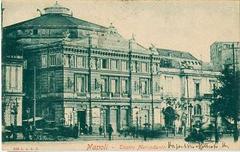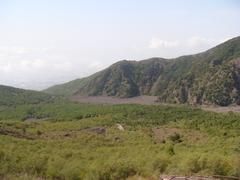
Villa Floridiana Naples: Visiting Hours, Tickets, and Historical Sites Guide
Date: 04/07/2025
Introduction: History and Cultural Significance
Villa Floridiana is an iconic neoclassical villa perched atop Vomero hill, offering panoramic views of the Gulf of Naples and Mount Vesuvius. Originally established as a country estate in the late 18th century, the villa was transformed in the early 19th century by King Ferdinand I of Bourbon for his second wife, Lucia Migliaccio, Duchess of Floridia. Esteemed architect Antonio Niccolini oversaw the neoclassical redesign, while Friedrich Dehnhardt, director of the Naples Botanical Garden, conceived the surrounding English-style landscape gardens. Today, Villa Floridiana is renowned for its romantic gardens and as the home of the Museo Nazionale della Ceramica Duca di Martina, which houses one of Italy’s finest collections of European and Asian decorative arts spanning from the 12th to the 19th centuries (Charmenapoli, OpenCampania, Walks of Italy).
Villa Floridiana is not only a testament to Naples’ aristocratic elegance but also a vibrant hub for history enthusiasts, art lovers, and nature seekers. Its lush gardens, unique architectural follies, and charming resident cat colony contribute to its tranquil atmosphere. Comprehensive visitor information regarding hours, tickets, and accessibility ensures a smooth and enjoyable visit.
Table of Contents
- Introduction: History and Cultural Significance
- Early Origins and Royal Acquisition
- Neoclassical Transformation and Landscape Design
- The Duchess’s Residence and Later Ownership
- State Acquisition and the Birth of the Museum
- Visiting Villa Floridiana: Hours, Tickets & Access
- Highlights: What to See and Do
- Nearby Attractions and Travel Tips
- Architectural and Cultural Importance
- FAQ
- Conclusion
- References
Early Origins and Royal Acquisition
Villa Floridiana’s origins trace back to the late 18th century as a country estate owned by Prince Giuseppe Caracciolo of Torella (Charmenapoli). During the Napoleonic era, Cristoforo Saliceti, minister under Joachim Murat, began constructing a villa, but the property was sold in 1817 to Ferdinand I of Bourbon, King of the Two Sicilies (Wikipedia). Ferdinand I acquired the estate to honor his second wife, Lucia Migliaccio, Duchess of Floridia, after their morganatic marriage in 1814 (Charmenapoli). The villa’s name commemorates the Duchess.
Neoclassical Transformation and Landscape Design
Between 1817 and 1819, the villa was redesigned by Antonio Niccolini, who created a stately neoclassical residence with symmetrical lines and Greek and Roman-inspired elements (Wikipedia). Niccolini’s vision integrated the villa with the natural landscape and romantic ideals of the time, featuring an Ionic temple, elegant porticoes, and refined interior details (Charmenapoli).
The gardens, designed by Friedrich Dehnhardt, showcase nearly 150 species of plants, including oaks, pines, palms, cypresses, and camellias (Napolike). English-style landscaping with winding paths, groves, and architectural elements such as an outdoor theater, fountains, statues, and artificial ruins create a romantic, picturesque setting (Discover Campania).
The Duchess’s Residence and Later Ownership
Lucia Migliaccio lived at Villa Floridiana from its completion in 1819 until her death in 1826 (Wikipedia). The estate included two main villas—Villa Floridiana and Villa Lucia—along with extensive gardens (Charmenapoli). After the Duchess’s passing, parts of the property were sold to private owners, while the core of Villa Floridiana and its gardens gradually came under state ownership, reflecting broader societal changes in 19th-century Italy.
State Acquisition and the Birth of the Museum
In 1919, the Italian state acquired Villa Floridiana (Napolike). The villa became home to the Museo Nazionale della Ceramica Duca di Martina, following the donation of a comprehensive ceramics collection by Maria Spinelli di Scalea. The collection, originally gathered by Placido di Sangro, Duke of Martina, features around 6,000 pieces of European and Asian decorative arts from the 12th to the 19th centuries (Wikipedia, Triphobo). The museum officially opened in 1931 and is now internationally recognized for its breadth and quality (Charmenapoli).
Visiting Villa Floridiana: Hours, Tickets & Access
Hours
-
Gardens:
- April 1 – October 31: 8:30 AM – 7:00 PM
- November 1 – March 31: 8:30 AM – 5:15 PM
- Closed Tuesdays; check official sources for public holiday hours.
-
Museum:
- Typically Tuesday–Sunday, 9:00 AM – 7:30 PM (last entry 6:30 PM).
- Closed Mondays and select holidays.
Tickets
- Gardens: Free admission.
- Museo Nazionale della Ceramica:
- Standard ticket: €6
- Reduced ticket (EU citizens 18–25): €3
- Free for children under 18, Naples residents, and on the first Sunday of each month.
- Online purchase recommended to avoid queues.
Accessibility
The villa and museum offer partial wheelchair access, with ramps and assistance in key areas, but some garden paths are uneven. Contact the museum for detailed accessibility information.
Getting There
- Metro: Vanvitelli (Line 1) and Medaglie d’Oro stations are within walking distance.
- Funiculars: Montesanto, Chiaia, and Central lines serve Vomero; nearest stops are Piazza Fuga and Piazza Vanvitelli.
- Buses: Several routes connect Vomero to central Naples.
- Parking: Limited; use public transportation where possible.
Highlights: What to See and Do
Museo Nazionale della Ceramica Duca di Martina
Explore a world-class collection of ceramics, glass, porcelain, and decorative arts from Europe and Asia. Highlights include:
- Asian Ceramics: Chinese Ming and Qing porcelain, Japanese Edo-period vases (Lonely Planet).
- Italian Majolica: Renaissance and Baroque masterpieces from Faenza, Deruta, Urbino (OpenCampania).
- European Porcelain: Meissen, Doccia, Sèvres, Capodimonte, Wedgwood (OpenCampania).
- Other Decorative Arts: Glass, crystal, enamel, coral, ivories, bronzes, and period furniture.
Gardens and Outdoor Experience
Wander through 8 hectares of English-style gardens, with winding paths, Mediterranean flora, a turtle pond, playground, and whimsical cat village (Walks of Italy). The villa’s terraces are perfect for panoramic photography of Naples and Mount Vesuvius.
Family-Friendly Features
Children can enjoy the playground, turtle pond, and the “cat village.” Open lawns and shaded areas are ideal for picnics and outdoor games.
Special Events and Guided Tours
Villa Floridiana hosts concerts, exhibitions, and cultural events, especially in spring and summer. Guided tours are available and recommended for in-depth exploration (advance booking suggested).
Nearby Attractions and Travel Tips
While at Villa Floridiana, visit nearby gems in the Vomero district:
- Castel Sant’Elmo: Medieval fortress with sweeping city views.
- Certosa di San Martino: Historic monastery and museum.
- Vomero District: Elegant streets, shops, cafes, and vibrant nightlife (Walks of Italy).
Tips:
- Wear comfortable shoes for uneven paths.
- Visit mornings or late afternoons for fewer crowds and better light.
- Bring water and snacks; there is no on-site café, but Vomero offers many dining options.
- Check for any temporary museum closures or special events in advance.
Architectural and Cultural Importance
Villa Floridiana exemplifies neoclassical architecture blended with 19th-century romantic garden design (Spotting History). Its transformation into a public museum reflects the democratization of cultural heritage in Italy, making aristocratic art and natural beauty accessible to all. Today, the villa and its museum play a vital role in Naples’ cultural life, offering educational programming and fostering community engagement (Girl from Naples).
Frequently Asked Questions (FAQ)
Q: What are Villa Floridiana’s visiting hours?
A: Gardens: 8:30 AM–7:00 PM (April–October), 8:30 AM–5:15 PM (November–March), closed Tuesdays. Museum: 9:00 AM–7:30 PM, Tuesday–Sunday.
Q: How much is admission?
A: Gardens are free; museum tickets are €6 (standard), €3 (EU 18–25), free for minors and residents.
Q: Is Villa Floridiana accessible?
A: Partial wheelchair access; some paths and steps may pose challenges.
Q: Are guided tours available?
A: Yes, guided tours can be booked in advance.
Q: Does Villa Floridiana have a café?
A: No on-site café; visit nearby Vomero eateries.
Q: How do I get there by public transport?
A: Metro Line 1 (Vanvitelli/Medaglie d’Oro), funiculars (Montesanto, Chiaia, Central), or local buses.
Conclusion
Villa Floridiana fuses history, art, and natural beauty, making it one of Naples’ most cherished destinations. The villa’s neoclassical grandeur, world-class ceramics museum, and peaceful gardens provide a memorable experience for visitors of all ages. With convenient transport links, affordable tickets, and a wealth of nearby attractions, Villa Floridiana is an essential stop for anyone seeking to explore Naples’ rich heritage.
Plan your visit by checking updated hours and tickets online, and consider guided tours for a deeper dive into Naples’ aristocratic and artistic legacy. For more travel tips and updates, download the Audiala app and follow our social media channels.
View Villa Floridiana on Google Maps
References
- Charmenapoli
- Wikipedia
- OpenCampania
- Walks of Italy
- WhichMuseum
- Triphobo
- Spotting History
- Napolike
- Discover Campania
- Lonely Planet
- Girl from Naples












